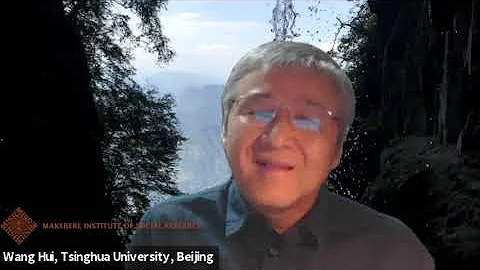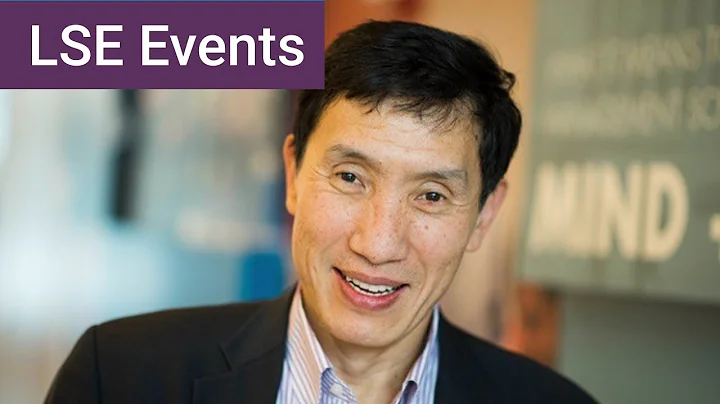Anti-Japanese hero Zhao Shangzhi: betrayed and sacrificed by traitors, his head was protected by monks from Prajna Temple in Changchun
In 1931, the September 18th Incident broke out. Countless patriotic martyrs died for the country during the 14-year war of resistance. In the northeast, Anti-Japanese Volunteers , guerrillas and other teams gradually converged into the Northeast Anti-Japanese Allied Forces led by the CCP. This team composed of anti-aggression martyrs also became a major concern for the Japanese invaders.
During this period, many patriotic anti-Japanese generals emerged. At that time, the two anti-Japanese generals in Nanman and Beiman were called "South Yang and North Zhao", respectively referring to the two anti-Japanese heroes, Yang Jingyu and Zhao Shangzhi_ strong4strong. Both died for the country during the Anti-Japanese War. 's remains were brutally damaged by the Japanese, and their heads were taken away after their heads were separated. After the end of the Anti-Japanese War, the CCP and many patriotic people tried every means to find the complete remains of these anti-Japanese heroes and bury them again.
In March 1948, some of the remains of the martyrs Yang Jingyu, Chen Hanzhang, and Chang Keelung were found , but Zhao Shangzhi’s head remained untouched. Until June 2004, people finally found Zhao Shangzhi's head , in the temple of Changchun Prajna Temple . At this time, it has been 62 years since Zhao Shangzhi's sacrifice. What is the connection between Changchun Prajna Temple and the anti-Japanese general Zhao Shangzhi? How did the heads of the martyrs who were taken away by the Japanese army be protected by the monks of the Prajna Temple in Changchun during the War of Resistance Against Japan?

1. National hero Zhao Shangzhi
Zhao Shangzhi was born in Liaoning Province in 1908,Joined the Communist Party at the age of 17 . In 1932, Zhao Shangzhi’s Bayan guerrilla team was adapted and continued to fight guerrilla warfare near Hulan and Suihua. Due to the influence of the "Left" line, there were differences within the team. During this period, Zhao Shangzhi fought with the Japanese and puppet troops. When the left eye was injured and blind.
In 1932, Harbin fell to , Zhao Shangzhi, the secretary of the Manchurian Anti-Japanese Federation, was appointed by the party to destroy the ranks of the Second Division of the Japanese Kwantung Army. was accompanied by student party member Fan Tinggui , The two secretly came to Dingjiaqiao culvert railway, destroyed the railway track that the Japanese army was about to pass. 50 minutes later, the Japanese locomotive drove through the damaged track, the whole car rushed down the trench and caused an explosion. caused more than 100 casualties. Japanese army.
In 1933, the anti-Japanese united front was established in Northeast China under the leadership of the Communist Party of China , and the anti-Japanese guerrillas in the northeast of the Zhuhe River were also established. fighting. Since then, the anti-Japanese troops continued to grow in the patriotic wave of the masses. Several Northeast guerrillas under the leadership of the Chinese Communist Party united to fight against Japan, including Yang Jingyu's team in Nanman, and Dongman Tong Changrong's team. The Northeast People's Revolutionary Army was formally established.

In 1935, Zhao Shangzhi served as the commander of the Third Army. In 1936, the Northeast People's Revolutionary Army was officially reorganized into the Northeast Anti-Japanese Allied Forces. Zhao Shangzhi’s Third Army has more than 6,000 fighters. They have been active in the Songhua River area for a long time to fight guerrillas, so they have gradually become a thorn in the eyes of the Japanese.Known by the Japanese puppets as "the most active representative of the bandit," the Japanese even ordered a huge reward for the corpse of Zhao Shangzhi, and hated the anti-Japanese general.
2. Zhao Shangzhi was captured and sacrificed
In 1936, the Third Army commanded by Zhao Shangzhi set up an ambush to introduce the Japanese and puppet troops into the deep mountains , and beat the Japanese and puppet troops. Soon after, the troops came to Tongbei County, Heilongjiang Province. The ice trip here is full of forests, and the terrain is very conducive to ambush the enemy. The ice trip ambush killed more than 200 Japanese puppet troops at the expense of seven soldiers, and killed the first lieutenant and the first warrant officer of the Japanese army.

Since then, the Japanese invaders have increased their encirclement and arrests against the coalition forces and underground CCP organizations, and the supplies of the anti-union forces have become increasingly scarce. In 1938, the CCP sent Zhao Shangzhi to the Soviet Union to seek assistance from the Soviet Far East Army, but he was detained by the Soviet Union and was released for more than a year.
In 1941, Zhao Shangzhi led a team back to the Northeast Anti-Japanese Battlefield, entered the northern part of Tangyuan County, Jiamusi, Heilongjiang, and recruited a soldier into the team to fight against the Japanese. Unexpectedly, Zhao Shangzhi came to Tangyuan County . The puppet learned that they sent traitors Liu Deshan, Wang Xiufeng and others to plot Zhao Shangzhi’s team to the Japanese area of activity and arrest him.
Liu Deshan pretended to be a hunter in the mountains, claiming that he also wanted to fight against Japan, and also provided information on the activities of the Japanese and puppets. Zhao Shangzhi was eager to develop an anti-Japanese team. He was defrauded of trust by traitors. With the cooperation of the Japanese and puppet agent Zhang Xiwei, he lured Zhao Shangzhi to Wutong. He, Zhao Shangzhi, Wang Yongxiao and other soldiers went with him to the Lujia Caiyuanzi for battle deployment.
Liu Deshan shot Zhao Shangzhi while he was unprepared and knocked him to the ground. Zhao Shangzhi immediately realized that the opponent was a spy, and shot Liu Deshan on the spot with two shots back! After the team of Takeo Anazawa from the Puppet Guard of Heli County arrived, they opened fire and fierce battle with two anti-Japanese fighters. In the end, Zhao Shangzhi and Wang Yongxiao were seriously injured and captured .
After Zhao Shangzhi was captured, although he was seriously injured, he neither surrendered nor cooperated during the interrogation. He only cursed the traitor who interrogated him: "You are also Chinese. Become a traitor. You should kill!", for eight hours Later, martyr Zhao Shangzhi was only 34 years old in the interrogation.

3. Remains buried in Prajna Temple in Changchun
The Japanese called Zhao Shangzhi’s former ministry to identify the corpse and confirmed Zhao Shangzhi’s identity. The Japanese invaders who killed him were Japanese Kwantung Army police officers Masao Tojo and Kujiro Tai. In order to claim credit for killing the anti-Japanese generals, they brutally cut off their heads and discarded their bodies in the Songhua River.
According to Masao Dongseong’s post-war confession, on February 25, Masao Dongseong personally escorted Zhao Shangzhi’s head by plane to the Police Department of the Puppet Public Security Department in Changchun. At that time, the Japanese officers had already wiped out humanity and planned to kill Zhao Shangzhi and Yang. The heads of Jingyu and other anti-Japanese martyrs were sent to Japan together to show off as "the fruit of the war." However, due to the decay of the skull, it can no longer be properly preserved, so the Kwantung Army Headquarters decided to order it to be burned.
A Chinese monk from Changchun Prajna Temple learned that Zhao Shangzhi's body was in the hands of the Japanese military. was about to be burned. asked the Kwantung Army Command for permission to bury Zhao Shangzhi's head in Prajna Temple.
Master Suixu was the presiding officer of Prajna Temple in Changchun at that time, Kwantung Army commander-in-chief Meizu Meijiro believed in Buddhism. There are also many senior generals in the Kwantung Army of Japan. Perhaps because of this reason, Umezu Mijiro agreed to his request and handed his head to him.

until death,Master Suixu never confided this to others from beginning to end . After the end of the Anti-Japanese War, the CCP and patriots rushed to find the remains of martyrs. In 1948, the bones of martyrs such as Yang Jingyu, Chen Hanzhang, and Chang Jilong were found in Changchun Medical College and were buried again. However, the whereabouts of Zhao Shangzhi's head remained unknown. To commemorate this hero, after the founding of New China, Zhuhe County in Heilongjiang was renamed Shangzhi County.
The burial of the head of the anti-Japanese general Zhao Shangzhi by Master Sui Xu came from an interview conducted by a Japanese scholar, Yamazaki Eko in the 1980s. She interviewed war criminal Masao Higashijo in Japan. The latter described the final whereabouts of Zhao Shangzhi's head, possibly in Prajna Temple. In 1987, the Anti-Union fighter Li Min and others learned of the news and were immediately excited. They went to Changchun Prajna Temple twice to find the remains of their comrades, but failed to find the whereabouts of his head.
Until 2004, military writer Jiang Baocai was preparing to produce a film and television work about the Northeast Anti-Union Army with director Li Jun. He visited many anti-Union veterans to find first-hand information . On June 1, he came to Changchun Prajna Temple, where Zhao Shangzhi's head was rumored to be buried.
When asked about the rumor about Zhao Shangzhi’s remains by a monk named Shi Guoci, the monk mentioned to him that it was . Yesterday, the monastery was repairing a wall, and the workers dug out a lonely head from the ground. I don't know who it was, but the monk has already buried the dead body again on the hillside of Jingyuetan Park.
The Anti-Union veteran Li Min, who has been following Zhao Shangzhi’s head, was 82 years old at that time. After learning the news, he and Zhao Shangzhi’s relatives rushed to Changchun. On June 2, they went to Zhao, a monk population. On a hillside where Shangzhi’s head was re-buried, a properly placed skull was excavated under the guidance of the monk Shi Guoci.Li Min, Jiang Baocai and others shed tears. It has been 62 years, and they finally found the bones of the hero.

After that, Jiang Baocai contacted experts and the military area for identification, and finally confirmed that the head belonged to the martyr Zhao Shangzhi who died 62 years ago ! At this point, the skull of Zhao Shangzhi, the heroic anti-Japanese general, was finally able to return to Chaoyang County, Liaoning Province, to sleep in the land of his hometown.
Text/Lu Soy Milk
.Reference materials:
1. "Zhao Shangzhi Subverting the Second Division of the Kwantung Army in Japan", Hou Xin
2. "A Generation of Famous Monks and National Heroes" "Zhao Shangzhi", Li Chunhua
3. "The Discovery of the Head of the Anti-Japanese National Hero Zhao Shangzhi", Wuxi








![[FULL] Professor Wang Gungwu: China's reforms - whose way is the best? - DayDayNews](https://i.ytimg.com/vi/9lyxv7NlY4w/hq720.jpg?sqp=-oaymwEcCNAFEJQDSFXyq4qpAw4IARUAAIhCGAFwAcABBg==&rs=AOn4CLBnO7Mxwb11SoPMAX5bBewt_bUhLA)


